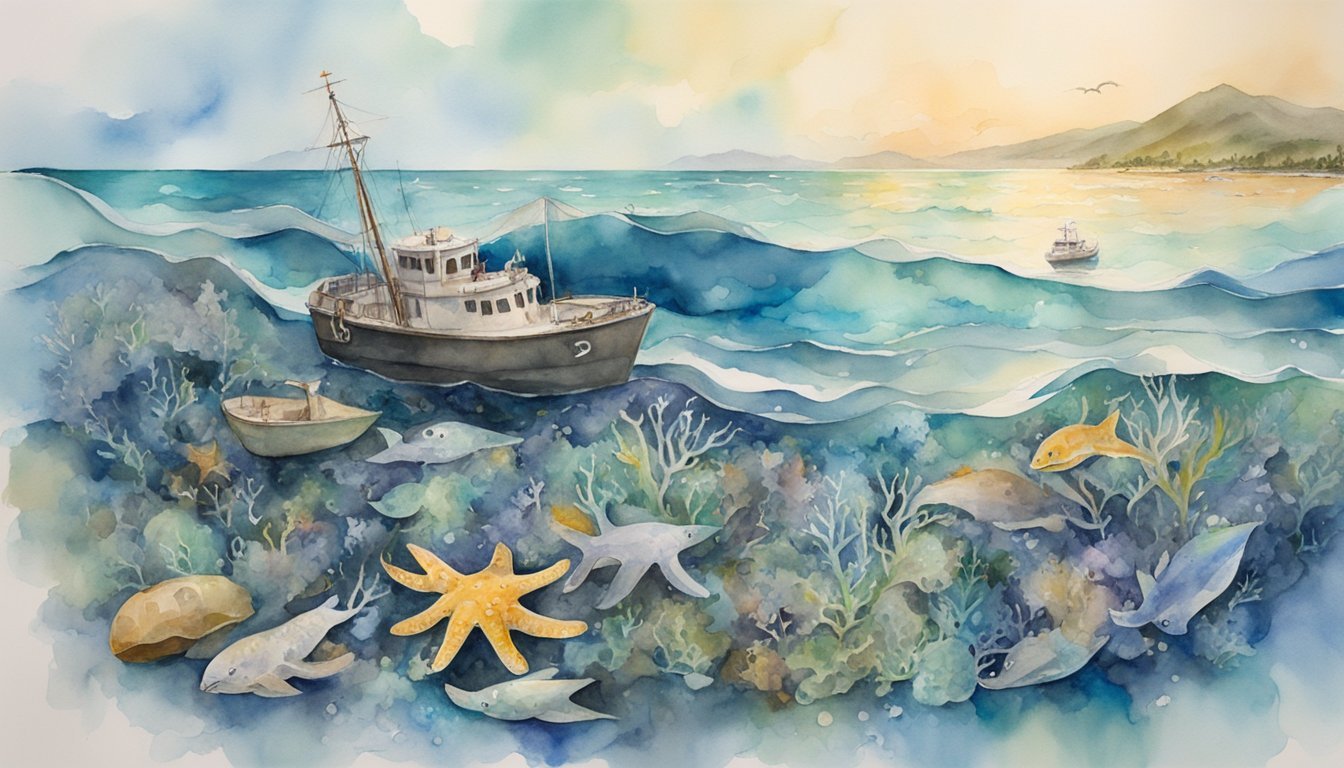Geography and Hydrology
Oceanic Composition and Topography
The Pacific Ocean is the largest and deepest of Earth’s five oceans, spanning 60 million square miles and reaching depths of over 36,000 feet in the Mariana Trench. It extends from the Arctic Ocean in the north to the Southern Ocean in the south, and lies between Asia and Australia on the west and North and South America on the east.
The ocean’s composition consists primarily of salt water, with the equator dividing it into the North and South Pacific. The Pacific Ocean’s seabed features a complex topography, including the East Pacific Rise, an oceanic ridge that runs from the Bering Strait to the southeastern Pacific. The extensive ocean basin also contains various other underwater mountains and trenches.
Bridges Between Continents
The Pacific Ocean plays a crucial role in connecting continents, providing low-cost sea transportation between Asia, Australia, North and South America. Key geographical features like the Bering Strait, which separates Asia and North America, and the Torres Strait, situated between Australia and New Guinea, serve as natural bridges for marine and air transportation.
The ocean is also bordered by numerous seas such as the Sea of Okhotsk, Bering Sea, Tasman Sea, and Coral Sea, which further connect regions and facilitate global trade and travel.
Islands and Archipelagos
The Pacific Ocean is home to several island groups and archipelagos, including Micronesia, Polynesia, and Melanesia. These vast island chains encompass numerous smaller islands, such as Vanuatu, Tuvalu, Tonga, and the Marshall Islands.
Some of these islands are formed by undersea volcanic activity, while others are the result of coral growth. The western Pacific, in particular, is known for its high concentration of islands, many of which are popular tourist destinations due to their tropical climates and unique ecosystems.
Environmental and Human Impact

Climate and Weather Patterns
The Pacific Ocean plays a significant role in the global climate, with trade winds blowing from east to west across the tropics, shaping weather patterns from Southeast Asia to California. The ocean is also home to various types of cyclones, such as tropical cyclones and typhoons, which can cause destruction in coastal areas such as the Philippines and Japan. Due to climate change, the intensity and frequency of these extreme weather events are expected to increase in the coming years.
Ecology and Marine Life
The Pacific Ocean is home to a diverse range of marine life, from fish to sea lions. However, the effects of global warming and ocean acidification threaten these ecosystems, impacting not only the ocean’s flora and fauna but also the socio-cultural, economic, and human health components of many nations around the Pacific.
The Great Pacific Garbage Patch, a massive vortex of plastic debris, is another major environmental concern for marine life in the Pacific Ocean. As plastic pollution accumulates, it poses a detrimental effect on coastal and deep-sea coral ecosystems across the ocean.
Human Exploration and Use
Historically, the Pacific Ocean has been an essential avenue for human exploration. Notable figures include Ferdinand Magellan, who famously navigated its waters in the early 16th century. The name “Pacific” comes from the explorer’s observation of the ocean’s relatively calm and peaceful nature.
Today, the Pacific Ocean continues to be an essential resource for countries bordering it, like the US, China, Chile, and island nations such as Hawaii and New Zealand. Activities such as fishing, shipping, and oil exploration occur within its waters. However, these human activities, along with pollution, contribute to stressors on the ocean’s ecology.
Moreover, the Pacific Ocean is notorious for its geological activity. The Ring of Fire, a 25,000-mile-long horseshoe-shaped zone, is home to the majority of the world’s earthquakes and volcanic eruptions. It encompasses areas around the Pacific Ocean, including California, Japan, and the island arcs of Southeast Asia. The frequent earthquakes and tsunamis in the region are mostly a result of tectonic plate subduction beneath the ocean floor.

